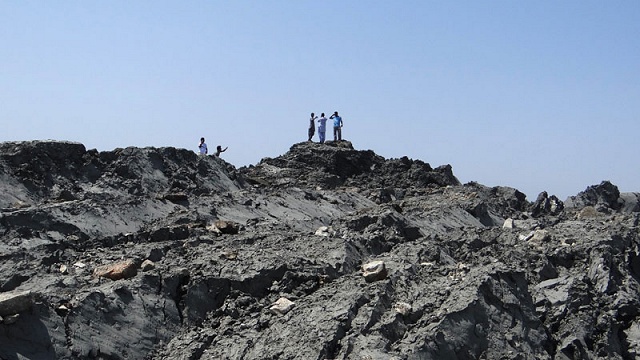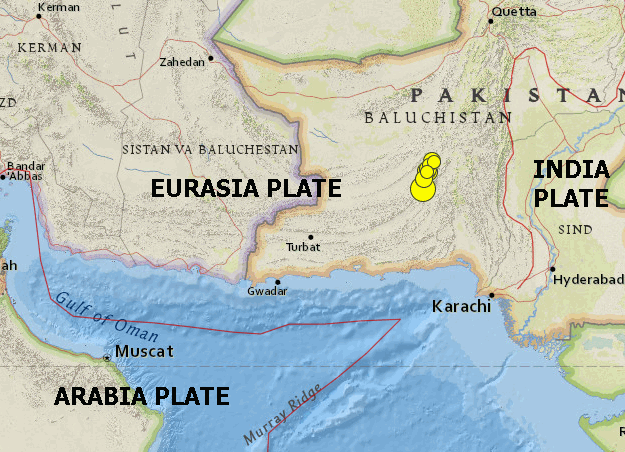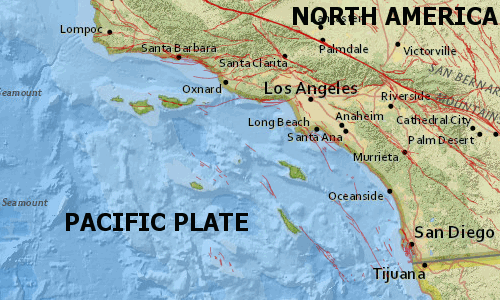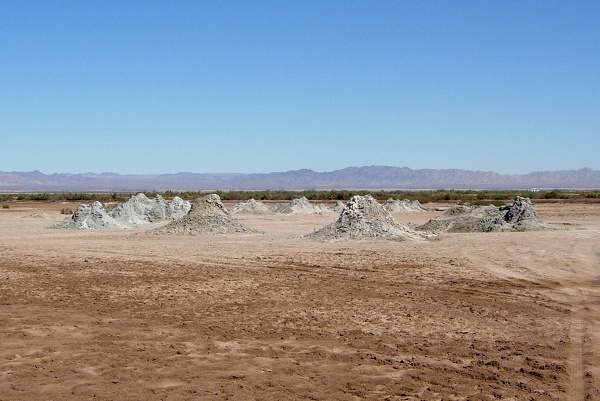When Pakistan was struck by a major earthquake earlier this week, one of its side effects seemed to capture the attention of the news services: several hundred miles from the shock, a small island rose above the waves of the Arabian Sea. Could America see the same thing when we get our next big earthquake? Very possibly.

Details are sparse, but at least two new islands appeared off southern Pakistan in the hours after the distant shaking stopped. The one shown in the photo was about 100 yards long, about half as wide and about 50 feet high. It was peppered with bubbling mudpots emitting enough methane gas to be an explosive hazard.
The signs are those of mud volcanism, a kind of cold eruption powered by high-pressure underground fluids. In this case the fluid would be natural gas (methane) and probably some brine along with it. The distant earthquake presumably caused this by disturbing a delicately balanced situation in which the fluids were very close to eruption already. Perhaps the gas had been seeping out in a stable way, and the extra shaking pushed it too far. Perhaps a near-shore landslide set things off. The best guess is that deeply buried beds of methane hydrate “ice” released a large amount of gas after the shaking.
Only an expensive, rapid scientific expedition can allow us to learn the real scenario, and that won’t happen—the sea will wipe the island off the map in a few months. But we can look at the general tectonic setting at the large scale, courtesy of the U.S. Geological Survey’s earthquake viewer.

Tuesday’s earthquake and its aftershocks appear as dots in the mountains of Baluchistan. The new island appeared at Gwadar. Tectonically, this area, known as the Makran, is being squeezed and crumpled as Arabia pushes northward into Eurasia. The natural gas in the young rocks of the Makran and the offshore sediments are free to move in this setting—it is as if the Yucatan were pushing the Gulf of Mexico shut against New Orleans, allowing the buried oil and gas (and methane hydrates) of the Gulf to escape.

